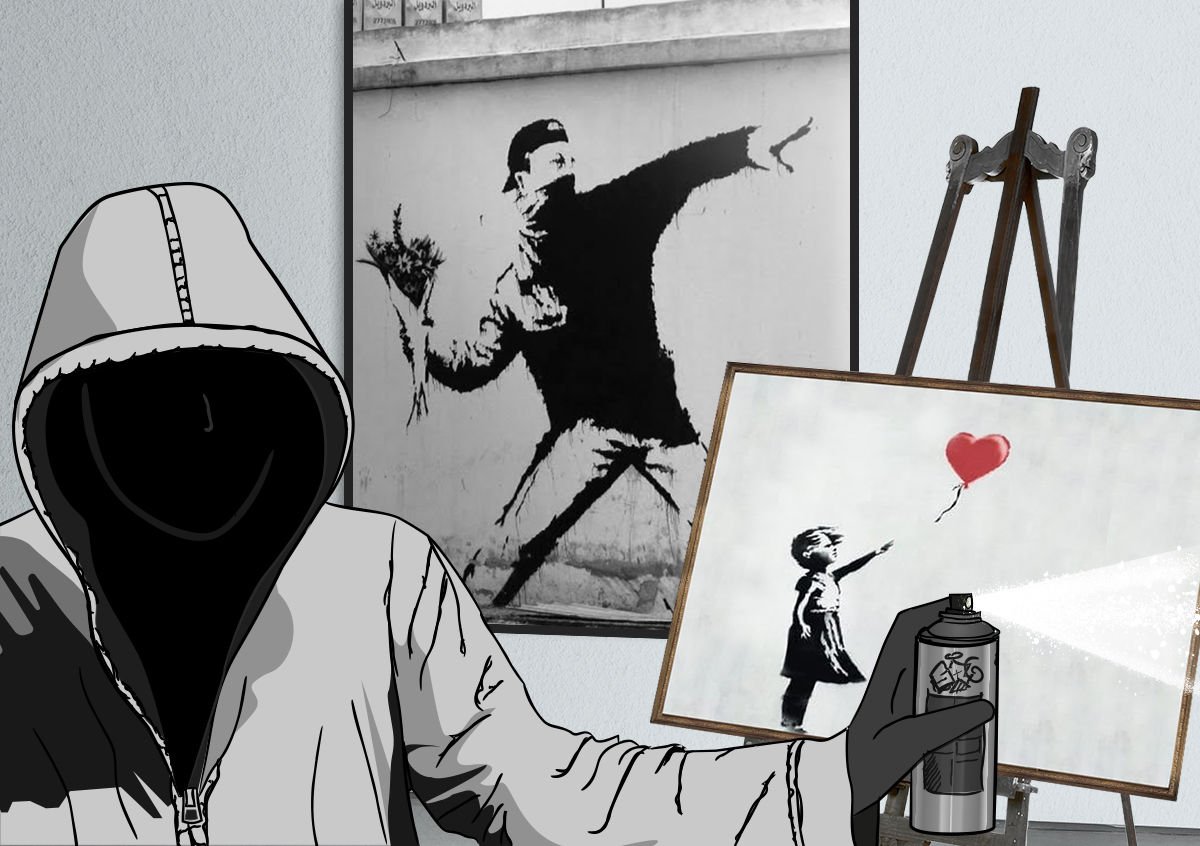The philosophy of Banksy isn’t just painted on walls—it challenges us to reflect on identity, power, and truth.
Banksy, the mysterious and often controversial street artist, has always walked the tightrope between political commentary and philosophical inquiry. Banksy’s bold visuals and elusive persona do more than provoke thought—they spark reflection on society and selfhood.
One of his latest murals in Marseille provides a vivid entry point into this ongoing philosophical dialogue. But it’s far from his first. Many of Banksy’s iconic pieces echo historical philosophical thought, from Plato’s allegory of the cave to Foucault’s theories of surveillance. Banksy’s philosophy emerges through classical and postmodern themes, exploring the tension between reality and illusion, chaos and control.
Marseille Lighthouse and the Philosophy of Banksy: Echoes of Plato’s Allegory
In May 2025, a new mural by Banksy emerged in a quiet alleyway on Rue Félix Fregier in Marseille. This latest work perfectly illustrates the philosophy of Banksy, which often explores themes of identity and perception. At first, the scene seems ordinary — a rusting bollard and a shadow on the wall shaped like a lighthouse. This clever interplay reflects the philosophy of Banksy by challenging what is real versus what is imagined. Accompanying this silhouette is the poignant statement, “I want to be what you saw in me,” a phrase that encapsulates the core of the philosophy of Banksy: the tension between reality and aspiration.
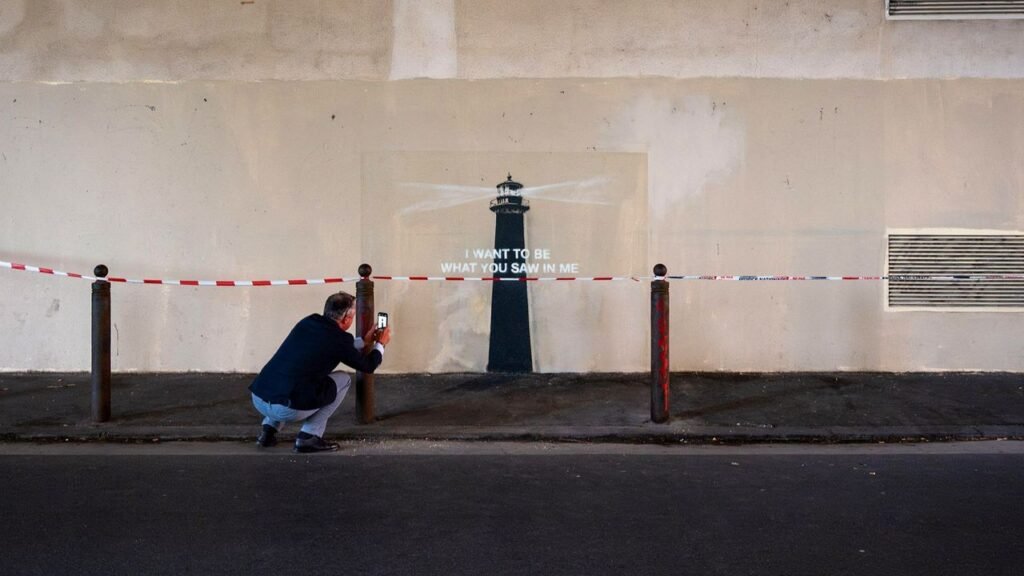
This mural flips a fundamental philosophical concept on its head—Plato’s allegory of the cave. In Plato’s story, prisoners see shadows as reality, unaware they are just reflections of higher truths. Banksy flips this idea — the dull bollard casts a shadow that stands for hope and aspiration. The shadow is not a falsehood but an ideal — a symbol of what could be.
This inversion prompts the viewer to consider where truth truly resides. Is it in what we currently are, or in what we might become? The lighthouse symbolizes how our greatest ideals may live in aspirations, not in our current state.
This mural calls on us to live up to the best versions of ourselves seen by others.
The Philosophy of Banksy in Girl with Balloon (2002): Schopenhauer and the Futility of Desire
Girl with Balloon, one of Banksy’s most iconic works, shows a girl reaching for a drifting heart-shaped balloon. The original mural, which surfaced in London in 2002, was accompanied by the phrase: “There is always hope.” But this seemingly simple image carries a heavy philosophical load.
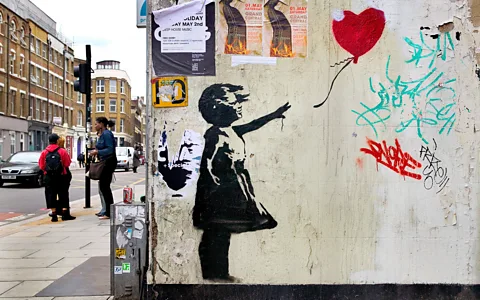
This work echoes the ideas of 19th-century German philosopher Arthur Schopenhauer, who described human desire as an endless, irrational force — the “Will” — that drives us toward unattainable goals. For Schopenhauer, the pursuit of desire is inherently tragic, as satisfaction is fleeting or unattainable.
The girl’s longing for the balloon, which is likely forever out of reach, mirrors this endless striving. Even more compelling is Banksy’s 2018 stunt during a Sotheby’s auction, when a framed version of the piece shredded itself upon being sold. This act wasn’t merely performance art—it became a literal enactment of Schopenhauer’s philosophy. Desire, once fulfilled, self-destructs. The balloon, like the artwork, was never meant to be held. Hope, however, remains.
Flower Thrower (2003): The Philosophy of Banksy on Nonviolence and the Ethics of Protest
Another deeply philosophical piece by Banksy is Flower Thrower, also known as Love Is in the Air. Painted in Jerusalem in 2003, this mural shows a masked man mid-throw—not of a Molotov cocktail, but a bouquet of flowers. This work embodies the philosophy of Banksy by contrasting violence with peace in a powerful and complex way. The philosophy of Banksy often explores how symbols can be weaponized or transformed, and Flower Thrower is a perfect example of this.
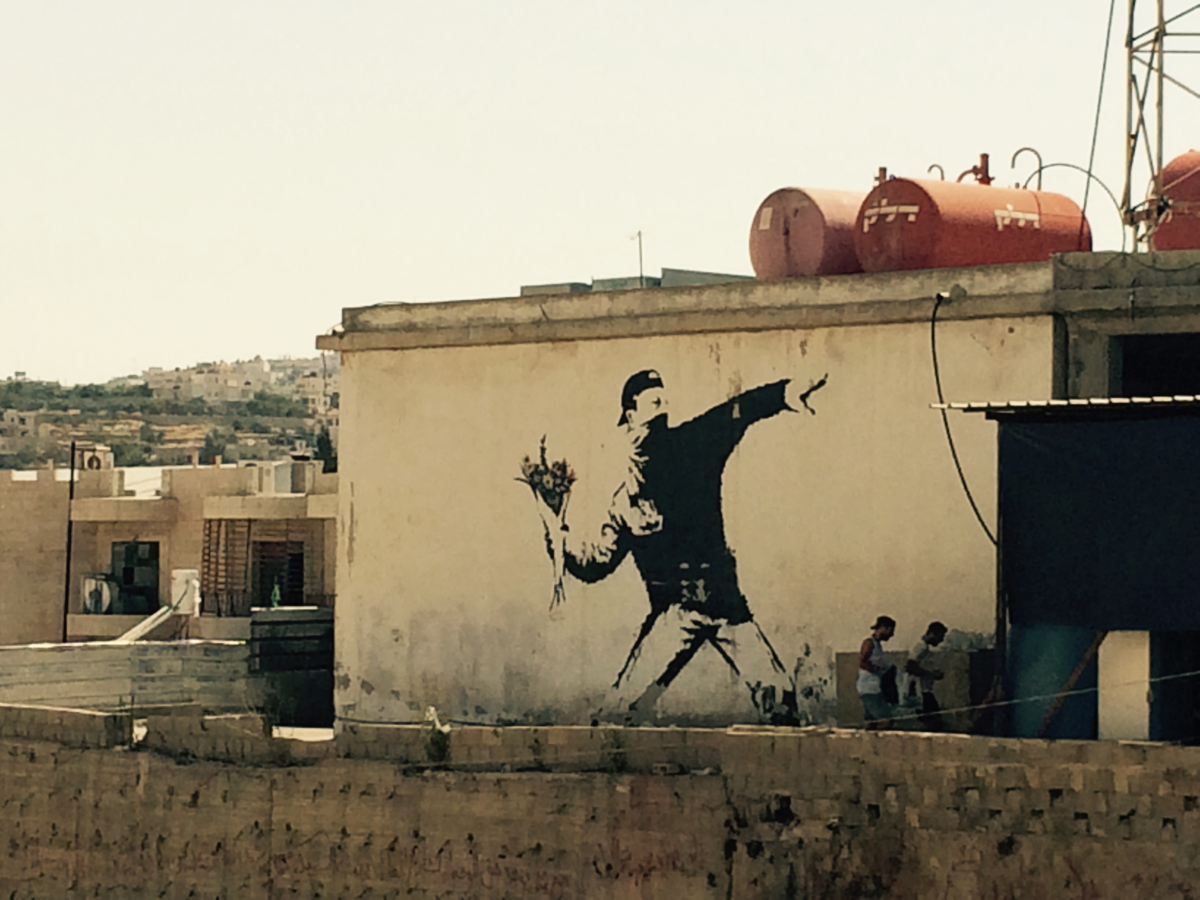
At first glance, this may seem to align with Gandhian nonviolence, or Satyagraha—a principle advocating resistance through moral strength rather than violence. But Banksy complicates this interpretation. The protester’s aggressive posture suggests rage, not peace. The flowers, symbols of beauty and love, are hurled like weapons.
This work challenges the traditional dichotomy between peace and violence, suggesting that ideals such as truth and beauty can themselves be radical instruments of disruption. The mural serves as a philosophical paradox: does the transformation of violence into love undermine protest, or make it more powerful?
This ambiguity echoes the moral questions posed by thinkers like Søren Kierkegaard and Friedrich Nietzsche, both of whom believed that true ethical action often lies beyond conventional definitions of good and evil. In Flower Thrower, Banksy invites us to consider whether defiance rooted in love can be a form of revolution.
One Nation Under CCTV (2007): Foucault’s Panopticon Realized
In 2007, Banksy created One Nation Under CCTV, a mural located near Oxford Street in London. The piece features a child on a ladder painting the titular phrase in massive letters, while a police officer and a dog surveil him. Above them, a real CCTV camera looms, watching all.
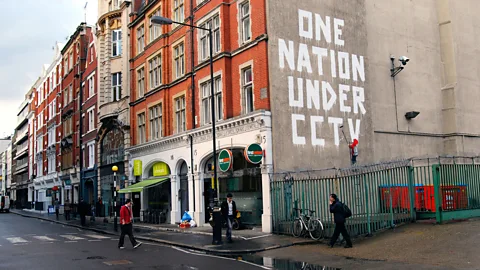
This work is a direct engagement with the theories of French philosopher Michel Foucault, particularly those expressed in Discipline and Punish: The Birth of the Prison. Foucault resurrected the concept of the Panopticon—a prison design by Jeremy Bentham that allows a single guard to observe all inmates without them knowing if they’re being watched. This architectural metaphor became Foucault’s symbol for modern society’s pervasive systems of surveillance and control.
Banksy’s mural visualizes this concept perfectly. The viewer is caught in a loop of watching: we see the officer watching the boy, while we ourselves are watched by the camera. The message is chillingly clear: we are all subjects within an invisible prison, policed not only by authority but by ourselves. The child’s rebellious act—painting the truth—suggests that awareness of surveillance can itself be a form of resistance.
Mobile Lovers (2014): Simone de Beauvoir and the Ethics of Authentic Connection
Mobile Lovers, a mural unveiled in 2014, portrays a couple locked in an embrace, both gazing lovingly — not at each other, but at their smartphones, which cast an eerie glow on their faces. It’s a witty but haunting commentary on the digital age, where real-world connections are often overshadowed by virtual ones.
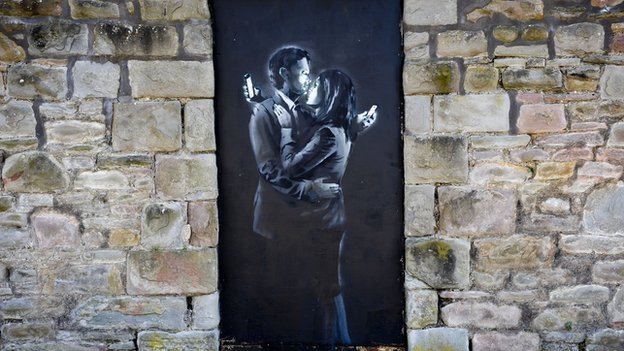
This piece finds a philosophical echo in the work of Simone de Beauvoir, particularly her 1947 text The Ethics of Ambiguity. In it, she argues that freedom and authenticity require real engagement with others. For de Beauvoir, detachment and disconnection degrade our potential for genuine selfhood.
The lovers in Banksy’s mural are physically close but existentially distant, embodying de Beauvoir’s warning that technology, if misused, alienates rather than liberates. In today’s world, where digital intimacy often replaces real emotion, this mural serves as a modern allegory of existential despair. Banksy subtly underscores how love itself can be lost to distraction, leaving only a semblance of connection.
Art as an Instrument of Philosophy
While Banksy’s art is visually simple, its intellectual undercurrents are profound. His works operate like visual aphorisms — brief, striking, and densely packed with meaning. They don’t merely critique power or provoke laughs; they invite viewers to grapple with foundational ideas about identity, truth, ethics, freedom, and reality.
He blends classic and modern philosophical ideas — Plato’s allegory, Schopenhauer’s pessimism, Gandhi’s pacifism, Foucault’s critique of surveillance, and de Beauvoir’s existentialism — with cutting-edge urban commentary. His murals are not just pictures on walls; they are philosophical propositions.
Banksy never lectures from a podium; instead, he uses the city as his canvas. In a world of sound bites and surveillance, he revives the Socratic method — posing tough questions without easy answers.
